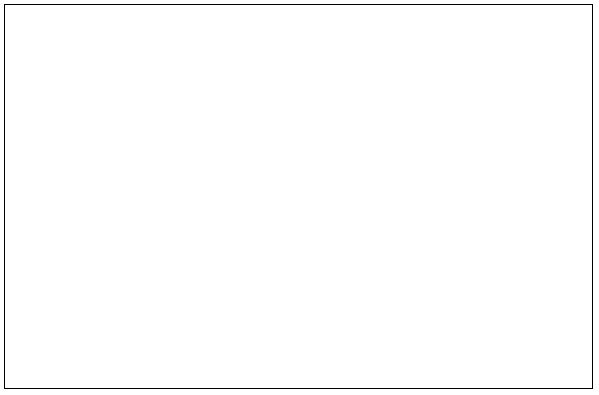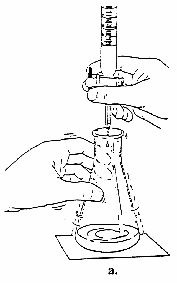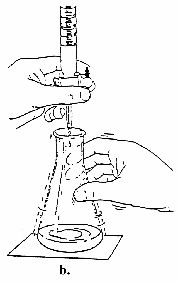


21
c)
Reading a buret - The reading of the liquid level should be at the lowest point of the meniscus.
To avoid parallax error, you must make your reading by looking at the graduations on the buret
directly at 90 degrees. The bottom of the transparent meniscus can be more easily
determined by placing a colored strip on a white card, just below the meniscus so that the
reflection of the colored portion of the card on the meniscus makes the meniscus stand out
more clearly. The buret should be read to 0.01 mL. The precision is ±0.02 mL.
d)
Titration - The sample to be titrated is usually placed in an Erlenmeyer flask (the receiving
flask). The stopcock is used to control the rate at which the liquid in the buret, the titrant, is
added to the receiving flask. The proper manipulation of the buret and titration flask is
illustrated below. Place your non-dominant hand around the buret and hold the handle of
the stopcock between your fingers and thumb. Hold the Erlenmeyer flask so that the tip of
the buret is about 1 cm into the neck. Continuously swirl the flask with your dominant hand
while manipulating the stopcock with your other hand. Even though this technique may
seem awkward at first, experience has shown it to be the most satisfactory, and with a little
practice it can become automatic.
e)
End point - There is a local transient indicator color change where a drop from the buret
enters the solution. As the trail of color persists longer and longer, make additions smaller
Titration technique.
A left-handed person should control the buret stopcock with the
right hand, swirling the flask with the left hand. (Figure a.)
A right-handed person should control the buret stopcock with the
left hand, swirling the flask with the right hand. (Figure b.)
